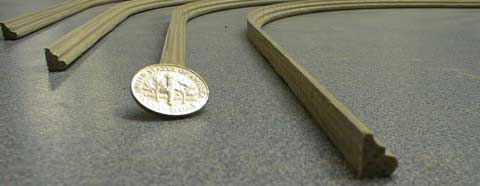Question
I'm a professional millworker who specializes in radius work. I’ve made many complicated pieces of trim, but this time I've hit the wall. I have to make a small radius overlay moulding, 3/4 x 1 1/4, profiled on 3 sides with a 3/8 x 7/8 rabbet on the back side. There is no room for fasteners to hold it to a template. The radius is about 22", and the piece is 30" long. The piece is made of Jatoba, and is very hard and brittle. I spent most of a day with various templates trying to hold it from the backside, with the rabbet registering the part to the template and a screw at each end to hold the blank. That was dangerous though.
Has anyone had much luck using hot glue to hold such small parts to templates for profiling? Laminating the billet to be machined is an option as there is too much cross-grain at the ends of each piece, and it’s very explosive. Any advice would be greatly appreciated.
Forum Responses
(Architectural Woodworking Forum)
From contributor F:
I recently made some faux bamboo moulding and one lathe turned blank yields two pieces of moulding so instead of turning one piece blanks and then sawing them in half, I made "half blanks" and used some good quality double sided tape in between the two halves. If you put clamp pressure on two sided tape it develops a strong reversible bond. Two side tape plus your end screws might work.
We do curve parts all the time where the outside or inside is left wide, while profiling goes onto the opposite edge, and/or top or bottom. With little curve moldings - 11/16 x 11/16, we make the part double thick or thicker - 2-1/2 x 11/16, profile, then saw apart on the band saw or even the table saw.
Often, a part is made in two or three pieces to complete the arch to avoid that attention getting end grain. A one piece 180 will have a lot of cross grain movement, and will likely split if nailed- even with pre-drilling. Even if we could get a 180 degree arch, 6" radius, in one piece of wide stock, we'd still break it into two pieces at 90 degrees plus for shaping/safety.
